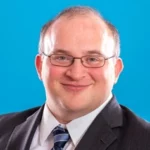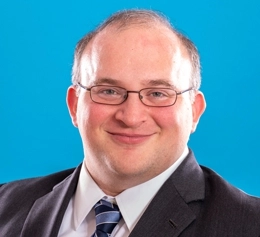Recently, a set of more than a dozen lawsuits was filed by an NPENon-Practicing Entity. A broad term associated with trolls but now disfavored because it includes universities and legitimate technology developers that seek to license technology in advance rather than after a producing company has independently developed it. More. That wouldn’t really be news, most of the time—NPEs filed nearly 2,000 patent lawsuits in 2019. But there’s a few things that are a little different about this case.
First and foremost, the patent goes back to a patent application filed in 1983—a patent that won’t expire until 2027, nearly 45 years after it was applied for.
Castlemorton v. The World
In these lawsuits, an NPENon-Practicing Entity. A broad term associated with trolls but now disfavored because it includes universities and legitimate technology developers that seek to license technology in advance rather than after a producing company has independently developed it. More called Castlemorton has sued a variety of defendants, ranging from consumer electronics makers like Plantronics and Pioneer to telecom companies like Verizon and Comcast. All of the lawsuits center around a single patent—U.S. Pat. No. 7,835,421.
The ‘421 patent has an interesting history. It was invented by Geoffrey Bagley, a researcher in the U.K.’s Ministry of Defense. They, in turn, filed for a patent in the U.S. That’s where things go a little sideways.
U.S. patent law includes a provision for something called a secrecy order. Basically, when disclosureOne of the primary objectives of the patent system. In return for the government-granted right to exclude that is embodied in the patent, the inventor must disclose to the public through his patent the invention for which protection is sought. Inventors unwilling to disclose their invention to the public may instead opt for trade secret protection. of an invention might pose a threat to the national security of the United States, the patent application can be kept secret until such time as it will no longer do so, at which point the invention will be allowed to issue as a patent. And the Bagley patent is about a particular technique in Direct Sequence Spread Spectrum (DSSS) signalling—originally created during World War II to solve problems of enemy radio jamming. The idea that the Bagley invention might have a national security implication isn’t crazy. So the U.S. government issued a secrecy order. Then, each year, they renewed it. And renewed it.
Then, in 2010, they finally yanked the secrecy order and allowed the patent to issue. And the patent is valid for 17 years from the date of grant—until 2027.[1. This is because it was filed before a 1995 reform that changed patent term to 20 years from filing.] The U.K. government branch which had invented it had subsequently been semi-privatized as QinetiQ and proceeded to partner with an NPENon-Practicing Entity. A broad term associated with trolls but now disfavored because it includes universities and legitimate technology developers that seek to license technology in advance rather than after a producing company has independently developed it. More, Castlemorton, to assert its patent.
The only problem? The world had moved on. DSSS was well-known and understood and was part of a number of consumer products—including, most relevantly, the 802.11b Wi-Fi standard from 1999.
Secrets May Not Stay Secret
In 1999, the IEEE standardized what became the first widely-used form of wireless computer networking—Wi-Fi 802.11b. And Castlemorton claims that Wi-Fi uses the Bagley invention.
I don’t know if Castlemorton is right—it’s possible that what Wi-Fi does is what Castlemorton’s patent claims, and it’s just as possible that it’s different. But Bagley didn’t contribute his idea to the Wi-Fi standard—the engineers who developed that standard came up with it completely independently. That doesn’t matter for patent infringement (although maybe it should)—you can infringe even if you came up with it yourself.
Those engineers came up with the idea, potentially patented aspects of the idea, and put it into the standard. Industry then spent over a decade using that technology, investing huge amounts of money in building our modern wireless network environment, all without any idea whatsoever that Castlemorton would have a related patent.
And now, 20 years later—the point at which it would normally be a safe assumption that 802.11b technology is no longer under any patents—that tremendous investment is threatened. Even if technology has moved on from relying on 802.11b, modern wireless networking chips still include backwards compatibility and thus are potentially subject to infringement claims.
Submarine Patents (not the kind that might get a secrecy order)
This isn’t a concern unique to patents subjected to secrecy orders. There’s still a remnant population of pre-1995 patents out there that get 17 years from the day they grant, being tweaked to try to cover independently invented technologies. These are a species of “submarine” patent—the idea being that they’re filed and lurk, quietly, while the world creates an industry. Then, once issued, they get 17 years of licenses paid by an industry that was built by others using technology they invented on their own.
These applications are being kept alive by patent owners who filed a tremendous number of continuationA second application for the same invention claimed in a prior nonprovisional application and filed before the first application becomes abandoned or granted. Continuations are unique to the U.S. and are criticized for giving applicants endless opportunity to wear down patent examiners. See Lemley and Moore, Ending the Abuse of Continuation Practice. applications just before the 1995 transition. One example, Gil Hyatt, filed more than 400 applications just before the deadline, most of which are still being prosecuted. Each one has an average of more than 300 claims. Many of these applications claim to have been invented back in 1970.
If they issue—on technology that is presumably now long since established—Hyatt would be able to block others from using them, or force them to pay him licensing fees, for the next 17 years.
Another example, already issued, is U.S. Pat. No. 7,801,304, owned by Personalized Media. Filed in 1995 alongside many other applications, claiming priority to a 1987 application, it didn’t issue until 2010—and won’t expire until 2027. The original patent claimed transmitting a TV signal alongside overlay codes—instructions to a TV station to overlay material over the TV signal according to the overlay code. The modern members of the patent’s family claim things as varied as encryption signals alongside data signals and reprogramming a remote video receiver—and have been used to accuse products ranging from Amazon’s Kindle to Google’s YouTube software of infringing.
When litigated, Personalized Media’s patents have often been found invalid, whether at a district court or in IPR. But that’s after the expense of litigation or of an IPRIntellectual Property Rights. Usually associated with formal legal rights such as patent, trademark, and copyright. Intellectual property is a broader term that encompasses knowledge, information, and data considered proprietary whether or not it is formally protected.. And each one of the patents has to be invalidated individually. Some companies simply settle, rather than face the cost of litigation, even given the weaknesses apparent in Personalized Media’s patents.
That’s a real cost for innovation.
Continuations
Even if they didn’t file before 1995, there are patent owners who benefit from similar tactics today. They file an application and then file continuations to make sure they always have a new application they can tweak to try to cover new developments in technology. A paper co-authored by current Federal CircuitSee CAFC Judge Kimberly Moore and Prof. Mark Lemley explained the negative impacts of infinite continuations.
That’s one reason why former PTOPatent and Trademark Office, informally used interchangeably with USPTO. Director Dudas tried to limit the number of continuations you could file in a patent familyA patent family is the same invention disclosed by a common inventor(s) and patented in more than one country.. While the Federal CircuitSee CAFC rejected the rules, claiming that the patent statutes didn’t allow Dudas to make that change via rulemaking, the notion that unlimited continuations have negative impacts on the patent system hasn’t gone away. More recent scholarship by Profs. Melissa Wasserman and Michael Frakes suggests that the availability of unlimited continuations likely has an impact on the grant of patents at the margins, incentivizing the Patent Office to allow more patents of questionable validity.
The harms of secret and submarine patents like the Castlemorton and Personalized Media patents are one significant reason to consider continuationA second application for the same invention claimed in a prior nonprovisional application and filed before the first application becomes abandoned or granted. Continuations are unique to the U.S. and are criticized for giving applicants endless opportunity to wear down patent examiners. See Lemley and Moore, Ending the Abuse of Continuation Practice. reform. The work of Profs. Frakes and Wasserman, showing that it incentivizes granting invalid patents, is another. All that’s needed now is the reform.

